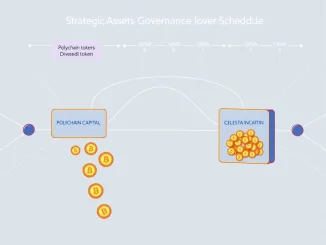
Ethereum holds significant value, with aspirations to secure trillions of dollars in the future. This immense potential also brings enormous security responsibilities. The Ethereum Foundation, recognizing this, has highlighted key areas that demand rigorous attention to ensure the network’s robustness and safety.
As part of its ambitious ‘Trillion-Level Security’ (1TS) plan, the Foundation has published a detailed report outlining the most pressing security challenges facing the ecosystem today. Addressing these issues is paramount for Ethereum to fulfill its promise as a global, secure platform for finance and decentralized applications.
Understanding the Core Ethereum Security Challenges
The report identifies six distinct but interconnected areas where security needs continuous improvement and focus. These challenges aren’t theoretical; they represent real risks that must be mitigated to protect users and the integrity of the network.
Let’s break down these critical areas:
- User Experience (UX) Security: This isn’t just about making things easy; it’s about making them safe. How can users interact with Ethereum without falling victim to phishing, scams, or accidental loss of funds due to complex interfaces or misleading information? Improving wallet security, transaction clarity, and overall user education are vital here.
- Smart Contract Security: Perhaps one of the most talked-about areas. Smart contract security vulnerabilities have led to significant losses in the past. Ensuring code is bug-free, audited, and resilient against attacks is a continuous battle for developers and the wider community. Formal verification and better tooling are key aspects of tackling this challenge.
- Infrastructure & Cloud Security: The underlying infrastructure supporting Ethereum, including nodes, RPC providers, and cloud services used by developers and exchanges, presents potential attack vectors. Securing this layer against breaches, denial-of-service attacks, and other exploits is fundamental to maintaining network stability and trust.
- Consensus Protocol Security: The core mechanism that keeps Ethereum running securely – the consensus protocol (Proof-of-Stake) – must be constantly monitored and hardened against sophisticated attacks like 51% attacks or validator collusion. Ensuring the protocol remains robust and decentralized is a top priority for blockchain security.
- Monitoring, Incident Response & Management: Even with the best preventative measures, incidents can happen. Having robust systems in place to monitor the network for suspicious activity, respond quickly to security breaches, and manage crises effectively is crucial for minimizing damage and restoring confidence.
- Social Layer & Governance: Security isn’t purely technical. Social engineering, governance attacks (like exploiting upgrade mechanisms or key compromises), and misinformation campaigns can pose significant threats. Strengthening community awareness, communication channels, and governance processes is part of the overall security posture.
Why Does Trillion-Level Security Matter?
The term ‘Trillion-Level Security’ isn’t just marketing; it reflects the scale of value Ethereum is expected to handle. Traditional financial systems have centuries of built-in security layers and regulations. For Ethereum to become a foundational layer for the global economy, its security must meet, or exceed, these standards. Addressing these challenges systematically, as outlined by the Ethereum Foundation, is a necessary step towards achieving that goal.
The Ongoing Effort for Crypto Security
Improving crypto security is not a one-time fix but an ongoing process. The report from the Ethereum Foundation serves as a roadmap, highlighting where collective effort is most needed. It involves developers writing safer code, researchers finding vulnerabilities, infrastructure providers hardening their systems, and users practicing better digital hygiene.
This collaborative approach across the ecosystem is what will ultimately determine Ethereum’s ability to securely manage vast amounts of value and become a trusted global platform.
In Conclusion: A Secure Future for Ethereum
The Ethereum Foundation’s candid report on security challenges is a positive sign, demonstrating a proactive approach to safeguarding the network’s future. By openly identifying these six key areas – from UX and smart contract security to the social layer – the Foundation is setting the stage for focused efforts across the community. Achieving ‘Trillion-Level Security’ is an ambitious goal, but one that is essential for Ethereum to realize its full potential as a secure, global, and decentralized platform capable of handling unprecedented levels of value. The journey involves continuous vigilance, innovation, and collaboration from everyone involved in the Ethereum ecosystem.



